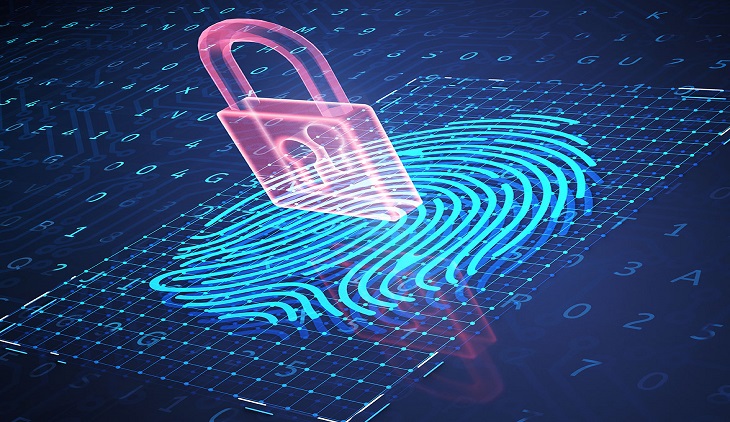
Have you ever come across biometric authentication or identification. Where your thumbprint or eye scans are recorded and analyzed to mark your identification and authenticate your presence?.
Thumbprint is a standard way of biometric identification in the current times, where a majority of workplaces, government offices, institutes, etc., are utilizing biometric thumb printers to authenticate a person and their identification.
Eye scanners scan the eye’s iris to identify the person and authenticate them. Smartphones are equipped with thumbprint scanners that unlock the phone only when the fingerprint is scanned and authenticated.
Some major mobile phone manufacturers like Apple and Samsung introduced the face Id feature that scans the face of the person to unlock the phone. The face Id feature basically scans the face cut of the person, and majorly it scans and records the iris of the person’s eye, which is one of the best and easiest examples of iris recognition but is just a small part of it.
Let us understand some basic things about Iris recognition in the further section of this article.
What is Iris Recognition?
Recognition of an individual by their iris, the ring-shaped area of the eye enclosing the pupil, is a form of biometric identification. Each person’s irises are completely distinctive, making them perfect for use in biometric authentication.
However, while Iris Recognition is still a relatively uncommon kind of biometric identification in some parts of the world, as it can be mostly seen in developed and privileged countries, its use is only expected to increase in the future years. Iris recognition is predicted to be widely implemented in the field of immigration control as a precautionary measure and a response to the global threat of terrorism.
As a powerful biometric with a high resistance to false matches and a high search speed against big datasets, iris recognition has become increasingly popular for identifying individuals, particularly in law enforcement and border control. To confidently identify people, Iris Recognition is a powerful and dependable technology.
How does iris recognition function?
In order to perform Iris Recognition, a specialized digital camera is used. Using both visible and near-infrared light, the camera captures an image of the iris with exceptionally high contrast. As part of Iris Recognition, the camera zeroes in on your eye, pinpointing the exact location of your eyelids and lashes in addition to the precise centre and outer edges of your pupils. The data is then sent to an Iris Recognition system, which analyses the iris’s unique pattern and generates a template for future use.
As long as they have an iris, blind persons can utilize Iris Recognition, which works with contact lenses and spectacles. Providing reliable identification makes it a highly adaptable technology, and with time it will prove to be one of the most utilized authentication techniques.
Top benefits of Iris Recognition
Contactless –
Although physical proximity to an iris scanner is required. The contactless solution provided by Iris Recognition makes the technology more hygienic and less obtrusive to the user.
Scalability and Flexibility –
The accuracy of iris recognition is improving rapidly. Scanners with an infrared cameras can be used even when it’s dark outside. In addition to being highly scalable, Iris Recognition’s adaptability has led to the technology’s adoption by governments and other organizations around the world.
Accuracy –
Iris Recognition technology has been deemed the most accurate in the industry, having received the highest matching accuracy evaluation in the Iris Exchange (IREX) IX evaluations conducted by the United States National Institute of Standards and Technology. With this accuracy, iris recognition technology is one of the most promising technologies in the near future.
Fast matching –
If a person has previously been added to the biometric system, iris recognition might be one of the quickest ways to verify their identity. It has been proved that the iris recognition process has the fastest scans and takes minimal time to match and identify the person, with the latest technology used along with machine learning and artificial intelligence.
Live Detection –
When it comes to liveness detection, iris scanner technology can tell if a person is alive by the way their irises move, eliminating the possibility of a faked identity being used to gain entry to a system that relies on high-quality still photos. This is the most celebrated benefit of iris recognition technology, which can prevent any possibilities of fraudulent activities and data theft.
Iris Recognition Market
Now, as we have gone through some of the basic but essential information about iris recognition technology, it is pretty evident that the global market for iris recognition will have a subtle growth in the coming future.
According to the research report published by market research future, the market for iris recognition is said to witness a growth rate of 16.21% from 2022 to 2030, earning revenue of USD 9.74 billion by 2030.
With all this information, the global iris recognition market will have exceptional growth considering its security and authentication benefits. It will soon be included in every application with the evolution of technology. Which will be no less than a blessing in this susceptible time, considering the security concerns.
Author Bio:
My name is Abhishek Singh and I currently work as a Team Lead in a market consultancy firm. An Electronics & Tell-comm engineer by education, I have prior experience in technology firms, market research.
Source: – https://www.marketresearchfuture.com/reports/iris-recognition-market-2430









